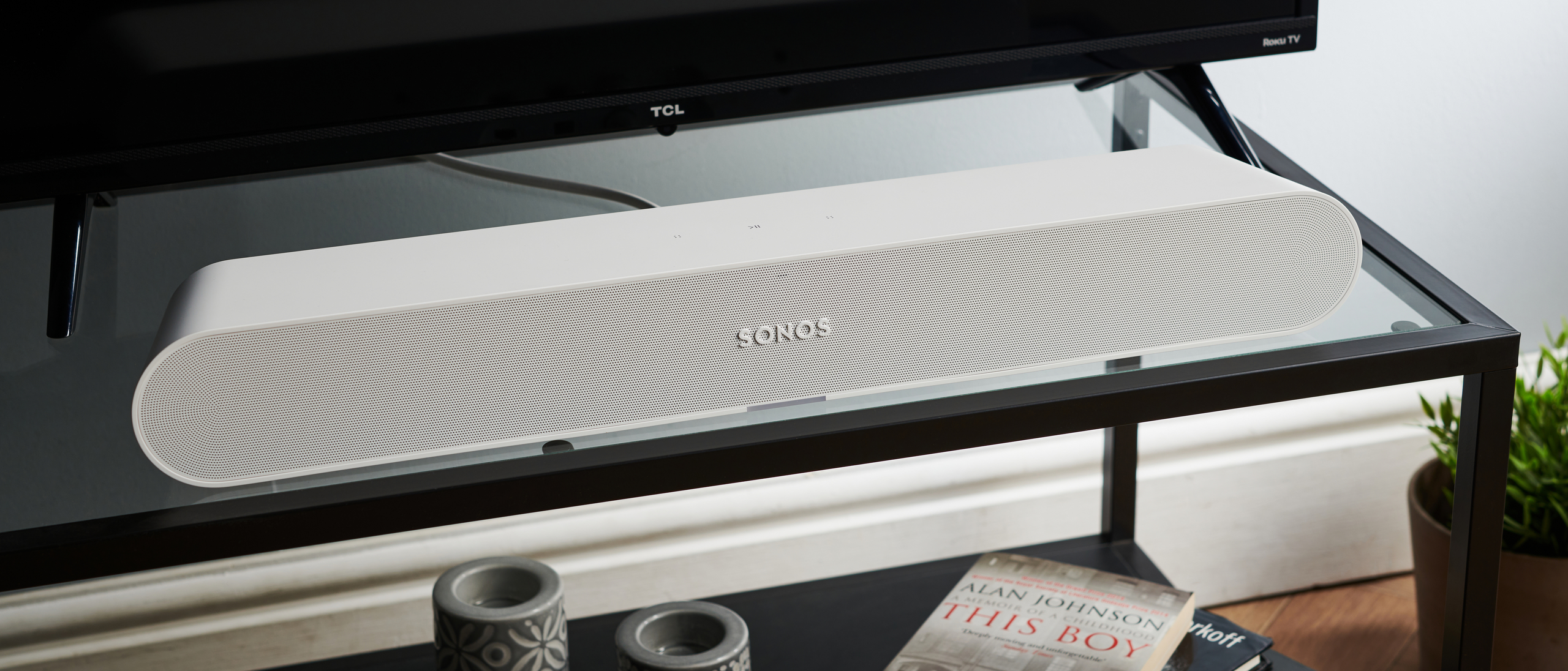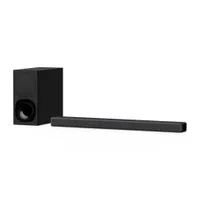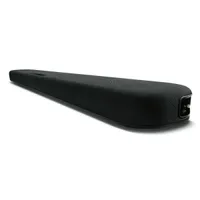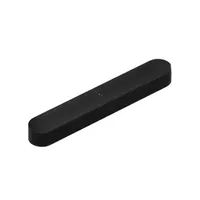TechRadar Verdict
The Sonos Ray is a major sound upgrade compared to the built-in speakers of just about any TV, and gets a massive recommendation on the front. We don't love the lack of HDMI, and movie lovers would do well to spend a little more… but for those who just want clearer speech and more thrilling soundtracks for little money, it's ideal.
Pros
- +
Big, well balanced sound
- +
Compact size and good looks
- +
Remote control learning built into setup
- +
Can expand with surround speakers
Cons
- -
No HDMI ARC option
- -
Sound isn't very positional
- -
TruePlay is iPhone-only
Why you can trust TechRadar
Sonos Ray: Two-minute review
The Sonos Ray is the cheapest soundbar in Sonos' range, cutting a big portion of the price of the Sonos Beam in exchange for losing some features, and to fit in an even smaller and more room-friendly frame.
Sonos says that it's designed for the nine out of 10 people in the world who are still using their TV's built-in speakers, so for this Sonos Ray review that's how we mostly tested it – not as a replacement for a giant soundbar under a brand-new 65-inch TV, but with a 50-inch secondary TV that's several years old.
So many of the best soundbars today are aimed at delivery big Dolby Atmos in a home theater setup, but the Sonos Beam is more about making sure that you can actually hear what people are saying and that soundtracks get enough detail and bass to sound like they're supposed to, which TV speakers just can't really manage.
And there's no doubt that it succeeds here. For something that's so small that it's at home with a TV anywhere between 24 inches and 50 inches in size, it puts out a pretty stunning amount of sound, balancing weighty bass with detail in speech.
It doesn't use an HDMI ARC port to get the sound from your TV (it uses an included optical cable instead), and this is a double-edged sword. Optical will work with basically any TV, so that's good; but it means the Sonos Ray needs to be taught how your remote works. However, the Sonos app actually walks you through this, and makes it so easy it's nearly foolproof – though you will need to know how to turn off your TV's built-in speakers.
The Sonos Ray might be the company's cheapest soundbar so far, but it's still not rock-bottom cheap as soundbars go, and its price is actually not too far from some soundbars that include subwoofers and Dolby Atmos for more dynamic and cinematic sound. If that's what you want, the Sony HT-G700, Sony HT-S400 and Sonos' own Sonos Beam (Gen 2) might be better purchases.
But they're all bigger – if the compactness of the Sonos Ray is a draw, then nothing else delivers such great sound for the price. And as an added bonus, it's great with music too, and has Sonos' full multi-room streaming tech built-in, naturally.
Sign up for breaking news, reviews, opinion, top tech deals, and more.
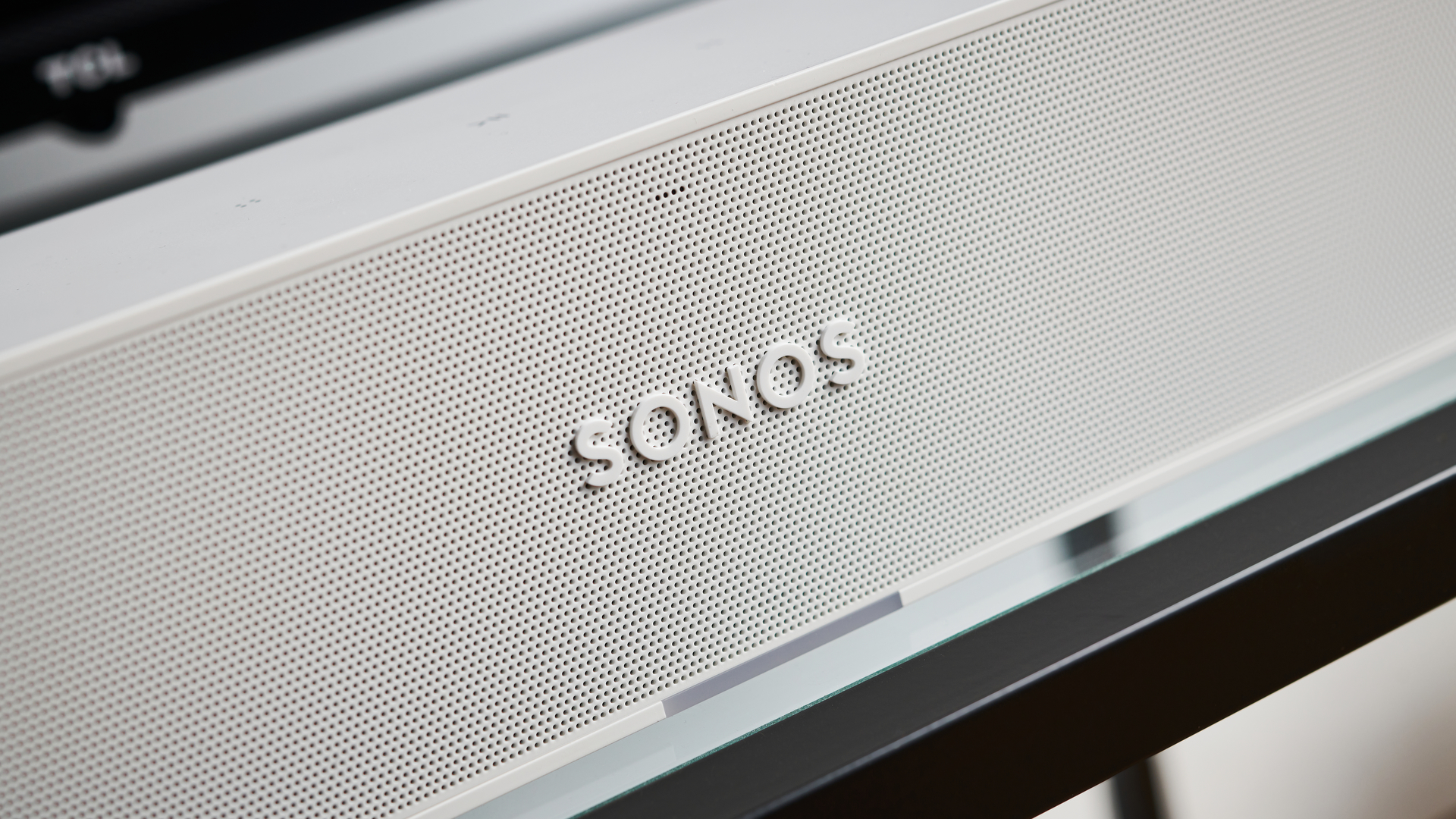
Sonos Ray review: Price and release date
- Costs $279 / £279 / AU$399
- Sonos' cheapest soundbar to date
- Released on June 7th
The Sonos Ray is available to buy from June 7th 2022, and it costs $279 in the US, £279 in the UK, and AU$399 in Australia.
This is a pretty significant saving compared to the Sonos Beam (Gen 2), which is the next-cheapest soundbar in Sonos' range, and costs $449 / £449 / AU$699. The Sonos Beam is an upgrade in lots of areas compared to the Ray, but they may be features people don't mind missing out on, such as Dolby Atmos support, built-in voice assistants, and HDMI ARC. You may be able to save via any Sonos promo codes available right now too.
However, there are plenty of other cheaper soundbars out there, including some well regarded options such as the Yamaha SR-B20A. You will also find soundbars heading right down under $100 / £100 – these are really just about adding volume rather than much in the way of quality, and the Sonos Ray is unquestionable a step up compared to those.
The biggest danger to the Sonos Ray in the UK is the Sony HT-G700, which can be found for around the same price, but adds a subwoofer and impressive Dolby Atmos sound. In the US, the Sony HT-S400 is the spoiler, bringing a subwoofer and HDMI support for effectively the same price as the Sonos Ray. But that means it's much bulkier, too.
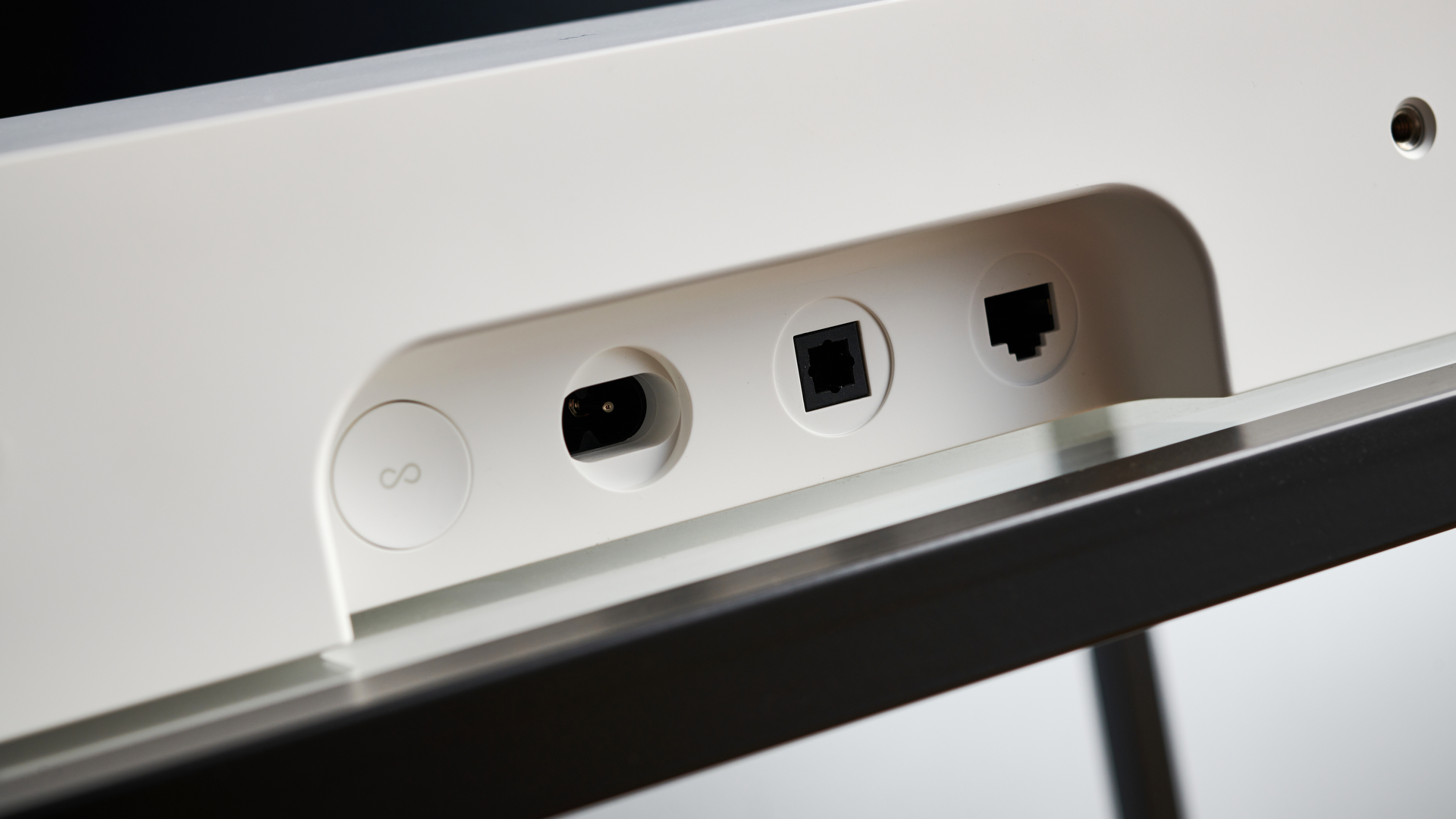
Sonos Ray review: Features
- Optical digital connection to your TV only
- Full Sonos wireless support
- Four speaker drivers, plus bass ports
Let's start with connectivity: the Sonos Ray uses an optical digital connection to connect to your TV, and that's the only way it can connect to it. There's no HDMI ARC port, and no 3.5mm jack. Don't worry if you don't have an optical cable already: you get one in the box.
The advantage of using an optical connection is that basically all TVs have this, including models going back to the earliest days of HD, and it carries high-quality sound. The disadvantage is the that's quite a dumb connection: you have to tell the TV you want the sound pushed out to the soundbar, and it doesn't do things like allow the TV to control the volume of the soundbar. If you want to control the volume of the soundbar, you either need a dedicated remote for it, or to program the TV's remote to work with it.
This is partly why HDMI ARC is the more common way to connect a soundbar these days – it automatically routes the audio away from your TV speakers to the bar, and uses your TV's remote for volume control without any additional setup.
As mentioned above, the Sonos Ray doesn't have an HDMI port – but the good news is that, being a Sonos product, you set the Ray up using the Sonos app, and this walks you through a process of having your Ray be controlled by your TV remote. We'll talk more about this in a later section.
Being a Sonos product also means the Ray acts as a full Sonos wireless speaker, just like everything else in the company's line-up, as well as a soundbar. You can stream music to it from the options in the Sonos app, or use Apple AirPlay 2 or Spotify Connect to stream from a music app directly. As with all Sonos speakers, there's no Google Cast support. It can connect to your network over Wi-Fi or its Ethernet port.
You don't get have any built-in voice assistant here, unlike the Sonos Beam or Sonos Arc. No Alexa, No Google Assistant, and no Sonos Voice Control. There's no mic at all.
You don't get Dolby Atmos support, unlike the Sonos Beam and Arc. You get support for Linear PCM, Dolby Digital 5.1 and DTS Digital Surround – these are the core 'basic' sound formats used today. The reason it supports surround formats is because, despite being just a front speaker, you can add other Sonos speakers to create wireless surround sound, if you choose. It's a nice option to have – we'll talk about it a little later.
In terms of the speaker setup itself, Sonos refers to it as a 3.0 system. There are four drivers: two central full-range drivers, with two tweeters at the sides. There are also two bass ports, for extra low-end oomph. The tweeters feature an innovative 'acoustic lens', which divides the sound from them, angle some towards the side, to add width, and some towards the front.
The whole speaker design is built to focus sound forwards, so that the Ray can be put inside a TV cabinet – many modern soundbars have speakers strongly angled left, right and upwards, and enclosing them like this is a bad idea. The Sonos Ray is fine with it.
From within the Sonos app, you can tweak the Ray's EQ (to add/remove bass and treble), or activate the Speech Enhancement and Night Mode features. Speech Enhancement is designed to make voice more clearly heard over other elements, while Night Mode flattens the quietness-to-loudness range of the speaker: whispers become more audible, explosions become less audible. It's for listening while the family's asleep, so you're not constantly adjusting the volume in a bid not to wake them.
You can also use Sonos' TruePlay tuning feature from the app, which measures how sound bounces around your room and tweaks the Ray's sound profile to compensate, adding accuracy and clarity. However, this only works on iPhone, sadly. Everyone else gets the sound out of the box.
- Features score: 3/5
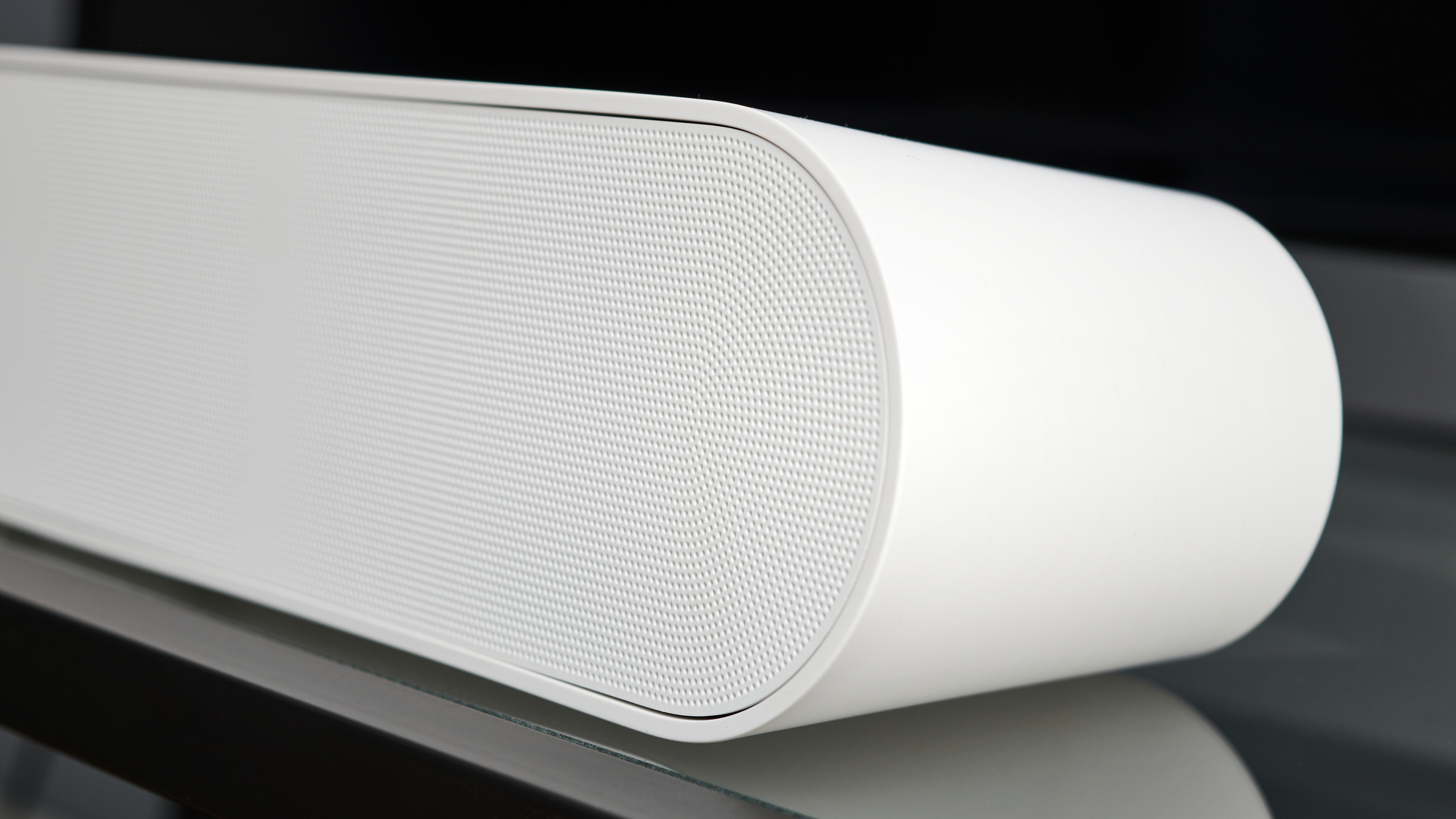
Sonos Ray review: Sound quality
- Massive, massive upgrade over TV speakers
- Good bass, and clear dialogue
- Not much positional sound
The Sonos Ray is something of a pocket rocket. For a small box, it's not interested in small sound – it's here to swing for the fences, and we love it for that. However, it's important to know something right away: we like it more if you can use TruePlay tuning, and not everyone can.
Let's start with what it sounds like out of box. It wants to be full and bassy, and for such a small speaker, it is. 99% of the time, this is a good thing – it feels meaty and deep in a way that the speakers of just about any TV could never touch. But when a soundtrack gets really thick with low-end sound, throwing bass-heavy sound effects alongside a booming deep soundtrack, it can feel like it’s bottoming out and creating something more mushy than bassy. This isn’t a common occurrence, but it really struck us in the spinning docking scene in Interstellar, where the soundtrack and booming strikes of debris on the ship merged into noise more than sounds.
But it's not overly bassy in most use. Dialog is way more forward in movie soundtracks than TV speakers can manage, adding lots of clarity and helping the speech to stand out.
We also tested the Speech Enhancer to boost it further, and interestingly we found that helped much, much more in talky dramas with soft, ominous background music than it did in complex action soundtracks, interestingly. Speech Enhancer seems to shift the sound profile up, away from the bass and toward the treble end. Watching Reacher, this made an immediate and clear difference to help slightly mumbly tough men come across more clearly, lifting them out of a tone-y background.
But in Mad Max: Fury Road's action sequences, it suppressed the excitement of the bass without actually making the speech noticeably clearer among the swirling effects and crescendoing music.
Based on our testing, we'd actually suggest that people who have just a little trouble with speech might try heading to the EQ and tweaking the Treble up to +3 or +4 , and the bass down to -3 or -4. This had a similar effect, but didn't limit the bass quite as much, so you still got more cinematic drive from it.
We settled on just using the default setting ourselves, though. We like the balance it achieves, and it delivers a pleasing amount of thump when needed, and can give soft sounds a light touch that doesn't feel flimsy.
That said, compared to higher priced soundbars, the different elements of a sound mix didn't stand out from each other as much as a bigger soundbar with more dynamic range can achieve. There’s a ton more detail than TV speakers can eke out, and better separation among the elements in comparison, but bass, mid and treble still feel tethered to each other here a little. Men’s voices can be dragged down by bassy effects, treble can struggle to pierce as much as it should when lots of midrange music is happening.
However, here's where want to bring up TruePlay. We noticed a small but noticeable improvement after going through the process, and it specifically helped with the points mentioned above.
It feels like it picks up half a notch for how it responds dynamically – sudden noises are a little more sudden, with extra pop. I relistened to sections of films where the bass felt mushy, and it now felt more detailed, if still a little muddy side. Meanwhile, the treble elements lift out of the mid-range a little more, adding more sparkle and airiness.
Transformative? Not really. But if the sound profile were like this for everyone, we'd raise the score slightly – so if you have an iPhone, factor that into your consideration.
With or without TruePlay, the Sonos Ray doesn't offer a massively wide sound with especially prominent stereo separation. When a sound moves across from left to right, you definitely get a sense of position and the feel of a shift… but don’t expect it to feel like it’s come from anywhere beyond the edge of your TV. Some soundbars create a wall of sound; this is more like a panel of sound.
It also can’t really layer sounds in space the way that some virtual Dolby Atmos soundbars, including the Sony HT-G700, can. In BlacKkKlansman, during Kwame Ture’s speech, crowd responses would come from behind in surround sound; the Sony can layer those sounds like they’re coming from the side and behind the TV, moving them away from the speaker's dialog. But in the Ray, it all comes from the middle.
This is all picking nits, to a degree. We've no complaint about what it achieves sonically, especially given how it's designed to be able to worn in confined spaces.
Built-in TV speakers often reduce thrilling soundtracks just to ambience. Instruments mush together, bass forgotten, Here, a soundtrack drives the movie again. Hans Zimmer gets to grip you by the aorta when the tension ramps up; Danny Elfman gets to bounce you across action scenes with pace; Jerry Goldsmith carries you triumphant through titles on a wave of horns.
Despite its forward-facing focus, it’s got more than enough clarity from angles too – sitting off-axis won't affect your enjoyment.
We also had no issues with syncing with the screen out of the box – we were happy with how the pictures and visuals matched immediately, though there is an adjustment tool for this in the app if you have problems.
And finally, let's mention music. All the benefits of how well it handles soundtracks come across here – it's delivers a great balance that delivers on the low end as well as solid treble. Vocals are great, and well detailed; you get enough pop from instruments to feel like you're getting everything from a song.
It still suffers from feeling a little compacted compared to a good wireless stereo option, but it's full of drive. We've praised the Sony HT-G700 here for its movie prowess, so it's time to turn the tables: the Sony is junk with music, but the Sonos loves it. So if music listening is a priority too, the Sonos is probably the best soundbar in its price range.
- Sound quality score: 4/5
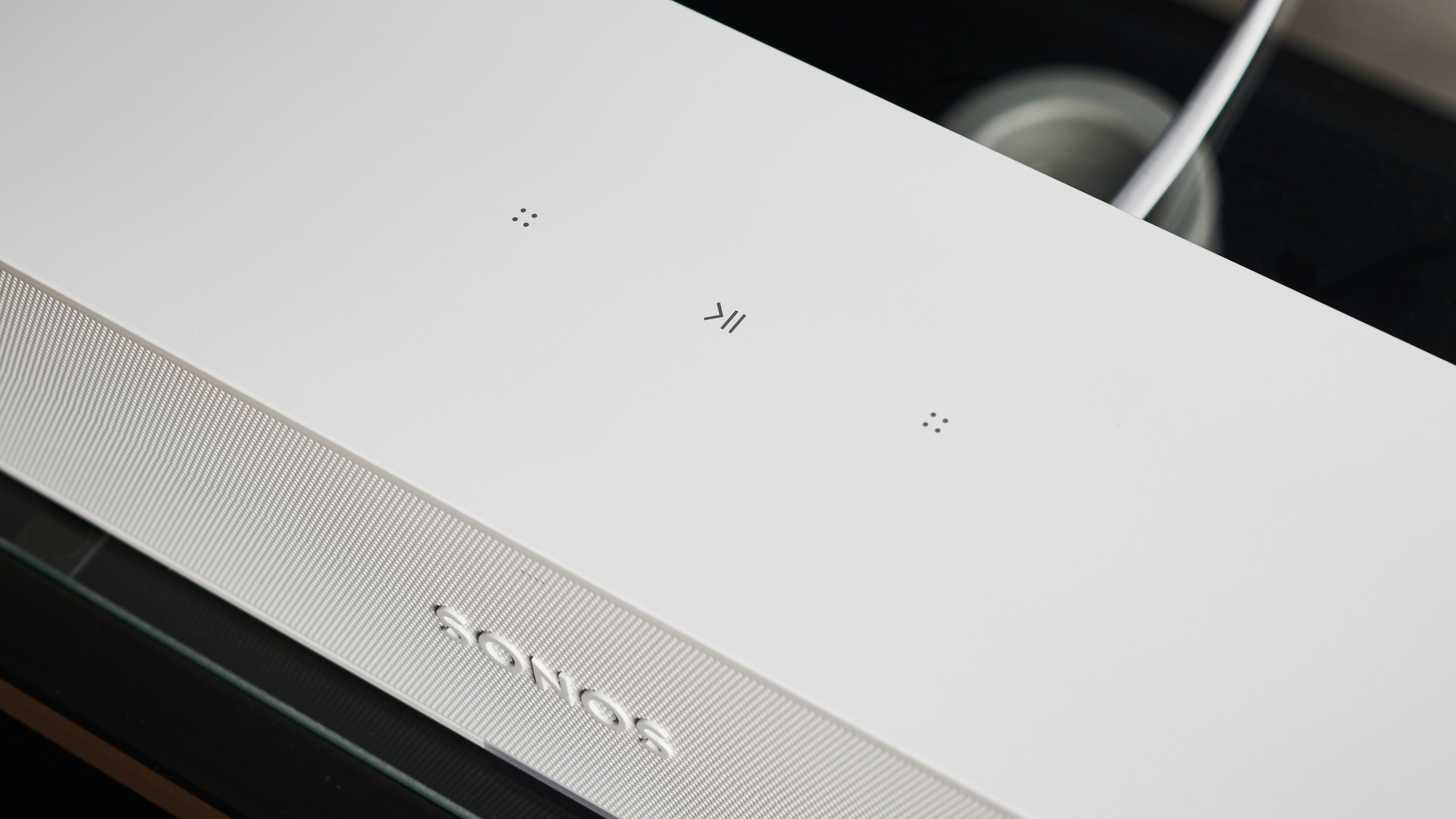
Sonos Ray review: Design
- Available in white or black
- Solid plastic construction
- Small enough for the tiniest of TVs
The Sonos Ray's design is simple, and hard to resist. Available in black or white, it's got a flat front (with a hard grille that's easy to dust, mercifully) in a lozenge shape, with tapered sides. There are touch controls on top, for tweaking volume or playing/pausing music.
There's an infrared sensor at the bottom of the front, so try not to place that in front as any lip or anything that would block it.
On the back you'll find the optical connection, Ethernet port and power connection.
The Sonos Ray is just 559 x 71 x 95mm / 22 x 2.8 x 3.7 inches (w x h x d) in size, which means it can do with a TV from 24 inches and up, really. We'd recommend 50 inches as the maximum size in terms of matching the scale of its sound to the pictures.
There's not much to say here, and that's a good thing – it's a nice-looking, solidly made soundbar than can be placed anywhere without fuss, and can stand to be grabbed and poked by curious little hands.
- Design score: 4.5/5
Sonos Ray review: Usability and setup
- App makes setup easy… mostly
- Remote command learning is easy and smooth
- All modes are chosen in the app
The setup process of the Sonos Ray is its greatest strength, but also reveals its potential weakness. Once you plug it in, you'll open the Sonos app, and it will quickly recognise that there's a new product and offer to walk you through the setup.
Here, you'll tell it what your Wi-Fi details are, and it'll get itself onto your network. It's pretty seamless. It'll also tell you when to plug it into your TV, and will show you what the plug should look like.
The really clever part is that near the end, it will ask you to grab your TV's remote, to point it at the Ray, and to press a volume button. From this, it will now work with your TV's remote – job done. If you need to add more remotes (we added an Apple TV remote in addition to the main TV remote, for example), there's an option in the app to go through that part of the process again.
Handling this wrong would've been the Ray's peril, but Sonos has nailed it in a way that even tech-unsavvy people can't go wrong with.
Except. Another part of the setup process is that the app asks you to turn off your TV's speakers, otherwise you'll end up with everything coming out double. And the app can't help here, because every TV is different. There will be some menu, somewhere, with this option. It might be anywhere, and it might be called anything.
On the Sony TV we mostly tested with, it was ready in a quick menu, mercifully. But this really feels a place where all of Sonos' work to keep connectivity simple by not including an HDMI port as well falls down. If connected over HDMI, this wouldn't be a step that needs doing – so was it really simpler for users not to provide HDMI as an option?
If you're comfortable with your TV's menus, it's not much of an obstacle at all. But if you're thinking of buying this for someone who isn't so hot on diving into settings, just be aware you might need to help.
There is a moment where the app will ask to check whether your remote is compatible with Sonos Ray, because some TVs use RF or Bluetooth remotes. Don't worry too much about this – the vast, vast majority of people buying Ray will have a compatible remote.
If you have an iPhone, the Ray will also suggesting using TruePlay tuning – as you've seen, we'd recommend you go along with its instructions.
When it comes to making adjustments in the Sonos app, Sonos' famous usability stumbles a little. Tweaking the EQ is done by selecting the name of soundbar within your list of products. But activating Night Mode and Speech Enhancer is done by selecting the 'Now Playing' section at the bottom of the screen. We don't think this is very intuitive – we'd prefer a place where you can just tap your product and choose its different settings/modes.
There's no screen on the Sonos Ray, so the only way to know whether you've got one of these modes activated is to look in the app.
- Usability and setup score: 4/5
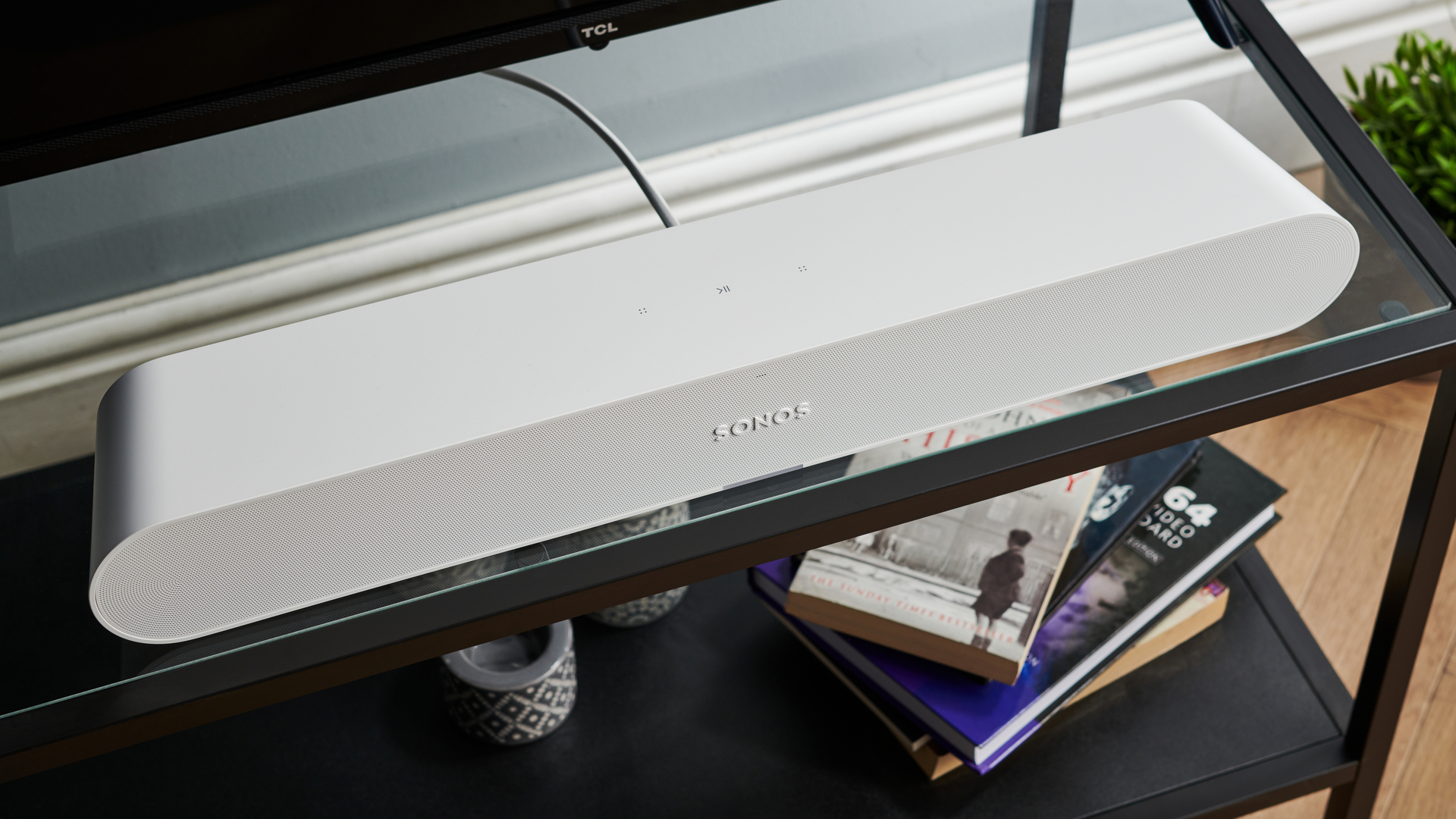
Sonos Ray review: Value
- No HDMI when competitors do have
- For movies, you can spend a little more for Dolby Atmos
- But for music, it's top of the class
When you add it all up, the Sonos Ray is very good value, but not quite great value. Part of it depends on how important music playback is for you. We think it's effectively best-in-class for this at its price – there are other soundbars very close on price that we'd prioritize for movie playback alone, but if you want something that you'll streaming music to often, the Sonos Ray has a big edge.
In terms of counting features, it's middle of the pack for value. No HDMI or Bluetooth holds it back, but it has top-tier wireless streaming, which again may totally make up for it.
We think the Sonos Ray is a very solid buy for its price, but it's not a bargain.
- Value score: 3.5/5
Sonos Ray review: Should I buy it?
| Attributes | Notes | Rating |
|---|---|---|
| Features | It's a full-fledged Sonos speaker, but the lack of HDMI is a shame. | 3/5 |
| Sound quality | Impressively full and clear sound from a small box. | 4/5 |
| Design | Very neat, very good looking, and made to last. | 4.5/5 |
| Usability and setup | Sonos app makes getting it going a cinch, but some options are a little hidden. | 4/5 |
| Value | It's a good buy for the money, but the price is dangerously close to some better-equipped soundbars. | 3.5/5 |
Buy it if…
You want better sound than your TV without breaking the bank
The Sonos Ray delivers sound that more full, more thrilling and more clear than TV speakers can. You could spend less on a soundbar; you could spend more on a soundbar… but for a lower-end price, you don’t get much more bang for your buck.
You want a small soundbar with big sound
The Sonos Ray fits nicely for TV between 24 and 50 inches, but the sound isn’t small. It can be the loud and exciting sound upgrade you need in a small space.
Streaming music is important too
The Sonos Ray is better balanced for music than most of its competitors, and with support for Sonos multi-room, Spotify Connect and AirPlay 2, it’s easy to play music to whenever you want.
Don't buy it if…
You want cinematic positional sound
The Sonos Ray doesn't offer any Dolby Atmos support, and while there good movement across the screen in stereo, you just don't get the precise positioning of sounds that more expensive options include. It also doesn't provide the height and width of bigger soundbars.
You want a smart speaker, or Bluetooth
While the Sonos Ray does stream over Wi-Fi, there's no voice assistant support, and no Bluetooth for music.
Also consider…
Sony HT-G700
This is much bigger than the Sonos – it's best for TVs of 50 inches and up – but in some countries it costs only a little more, yet delivers great Dolby Atmos sound, and comes with a subwoofer for more controlled bass. We'd recommend this as the cinephile's choice for the price range.
Yamaha SR-B20A
Does the Ray cost more than you'd like? This is our pick of the even-cheaper soundbars. Like the Ray, it's fairly compact and made for stereo thrills. And it also handles music well, thanks to Yamaha's heritage.
Sonos Beam (Gen 2)
This the Sonos soundbar that's one up from the Ray. That means you get more speakers for extra width and dynamic range, you get HDMI connectivity, and you get Dolby Atmos support. And it's still compact – it's good for TVs of 32 inches and up.
- First reviewed: May 2022
- How we test: explore TechRadar's review guarantee

Matt is TechRadar's Managing Editor for Entertainment, meaning he's in charge of persuading our team of writers and reviewers to watch the latest TV shows and movies on gorgeous TVs and listen to fantastic speakers and headphones. It's a tough task, as you can imagine. Matt has over a decade of experience in tech publishing, and previously ran the TV & audio coverage for our colleagues at T3.com, and before that he edited T3 magazine. During his career, he's also contributed to places as varied as Creative Bloq, PC Gamer, PetsRadar, MacLife, and Edge. TV and movie nerdism is his speciality, and he goes to the cinema three times a week. He's always happy to explain the virtues of Dolby Vision over a drink, but he might need to use props, like he's explaining the offside rule.
